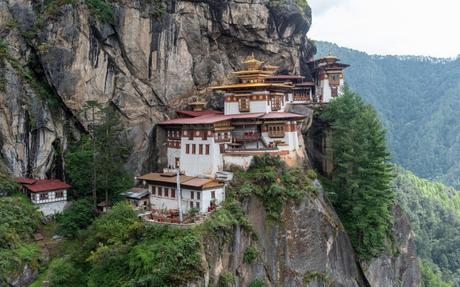
"One of our biggest challenges is that we are seen as this locked-down mountain kingdom," a Bhutanese politician complained to me during my visit to the tiny Himalayan country of the thunder dragon in late 2022. I would join the Prime Minister, government members and enthusiastic local residents during a first walk along the new Trans Bhutan Trail - a revived network of centuries-old trade paths.
Like many of the tourists in my party, I was lured by the mystery of what lay behind the golden temples and snow-capped peaks of a country that only opened to tourism fifty years ago.
Bhutan's draw has always been its elusiveness. A nation built on the principles of Buddhism and a philosophy of "gross national happiness" seems so strange and exotic in a world that thrives and crashes under capitalism that Bhutan might as well be on Mars.
Education and healthcare are free, there are no billboards or big fast food chains (junk food addicts in the capital Thimphu have their own KFC - Karma Fried Chicken) and this was the first country in the world to be declared carbon negative. It all comes down to a real-life Shangri-La.
But things inevitably change. Late last year, King Jigme Khesar Namgyel Wangchuck announced ambitious plans for a new urban development that should put Bhutan on the economic map in an address to the nation. Gelephu Mindfulness City covers 250,000 hectares (2.5 percent of the mountainous land) and includes residential areas, healthcare, spiritual and cultural centers, a university and an airport.
"The Gelephu Masterplan gives shape to His Majesty's vision to create a city that becomes a cradle for growth and innovation while remaining grounded in Bhutanese nature and culture," said Bjarke Ingels, Founder and Creative Director of Bjarke Ingels Group (BIG), the architects were commissioned to review the ambitious project. "We imagine the Mindfulness City as a place that couldn't be anywhere else."
It's a commendable concept; an attempt to balance the demands of economic development with the needs of spiritual well-being. But the cynic in me wonders if that's humanly possible. Could Bhutan's lofty urban dream ultimately be nothing more than a Buddhist Disneyland or a nirvanic Center Parcs?
The story continues
Attuning to the outside world
To be fair, Bhutan's rulers have been in a sticky situation for some time now. A mass exodus of disillusioned youth in search of better job opportunities in Australia, India and Kuwait has led to 14,000 people (2 percent of the population) leaving the country between 2018 and 2023, according to data from Paro International Airport.
"Unless we find the right solution, our population could shrink to the point where we have more shops than customers, more restaurants than diners and more homes than tenants," His Majesty said in his public address.
When I first visited Bhutan in 2010, internet connectivity was patchy. Now 3G is everywhere and the trappings of a materialistic outside world are hard to resist. Even before that, the advent of television sets had an impact. "We used to eat in a circle, but now we all sit in a U-shape," a Bhutanese resident joked to me.
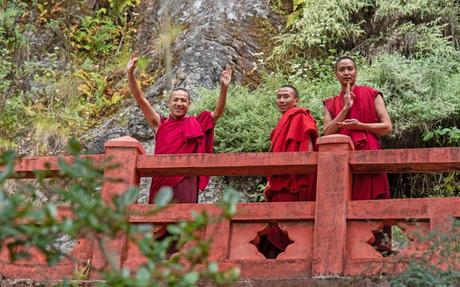
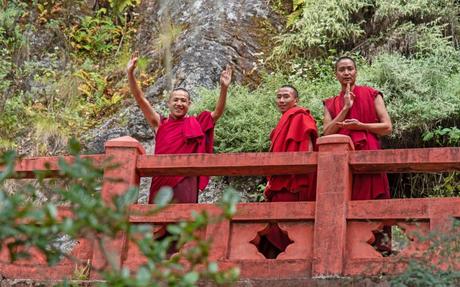
Bitcoin and biodiversity
The need for development is there, but there is undoubtedly a cost - usually the environment. Part of Mindfulness City's master plan includes a new hydroelectric dam, an industry that has overtaken tourism as the country's main source of income.
But organizers insist nature is at the forefront of the project: residential areas will be low-rise and low-rise, transport will run on clean energy and biodiversity corridors will allow elephants and other wildlife to move freely. Given that the power lines in the Phobjikha Valley have been carefully laid underground to avoid disturbing the flocks of black-necked cranes that arrive from Tibet every October, it is highly conceivable that these claims will be followed up.
Moreover, plans for future development are mainly in less invasive technological areas: blockchain projects, green cryptocurrency mining and drone testing are already underway. "With our cool temperatures and hydropower, we could become a major data center hub," an ambitious Bhutanese politician told me.
The Bhutanese Blueprint
Bitcoins are a world away from the auspicious pennies that Buddhas rain down in temples, but all these changes also have positive benefits for tourism. Considered by pilots to be one of the most difficult airports to land in, Paro has a limited number of flights and expensive seats sell out quickly. A new airport in a better location will undoubtedly facilitate access.
Jigme Dorji, a local guide working through the TravelLocal platform, predicts that the Mindfulness City could even be a blueprint for future tourism.
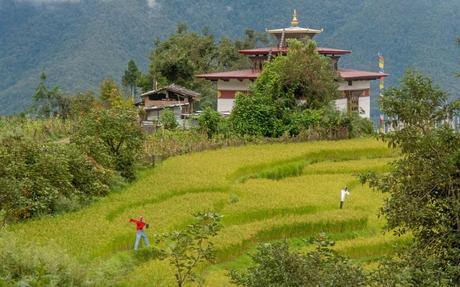
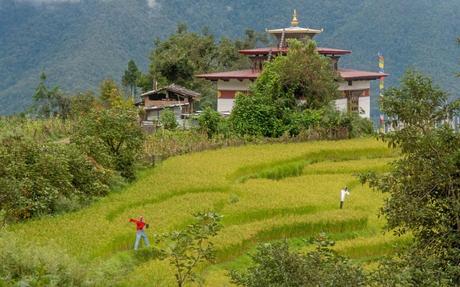
"It comes at a time when slow travel and prioritizing rest and wellbeing are at the forefront of travellers' minds. There are aspects of Bhutanese tourism that position the country as a pioneer that we can all learn from - especially preserving cultural traditions and avoiding overtourism."
Bhutan has always been a master of intrigue: visitors will undoubtedly flock to Gelephu just to see what it's like.
"It will take the collective effort of all Bhutanese people to make this a success," said a spokesperson for the Bhutanese Mindfulness City media team, aware of the many challenges ahead. "Bhutan will have to make up in energy and ingenuity what it lacks in numbers and economic capacity."
The gates to the kingdom are well and truly open. Time will tell if its potential can be unleashed.
